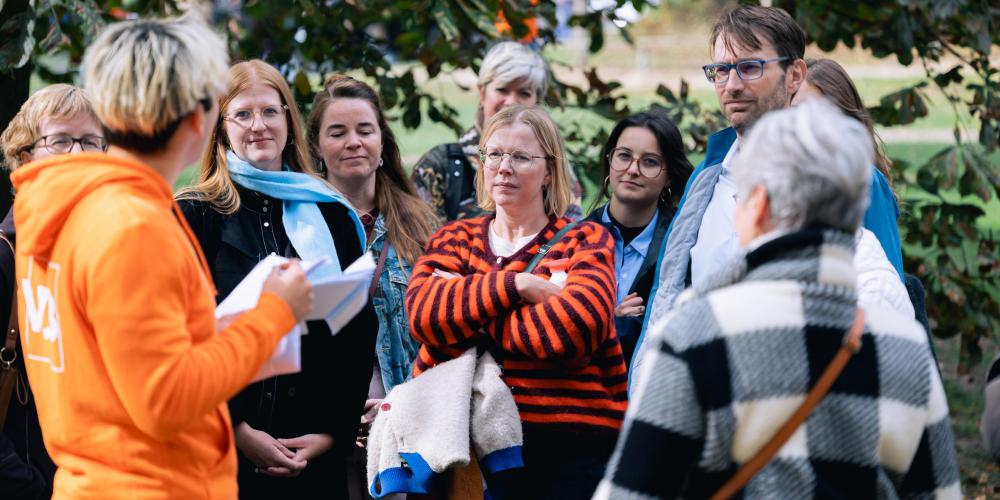
23 September was a special day. For the first time in ten years, the VUB opened the new academic year on its own campus in Ixelles, under the banner Open Mind. Open Science. Open Campus. That last part was meant quite literally. Hundreds of visitors took part in six thematic walks, focusing on new infrastructure and the pioneering role played by VUB researchers.
Overcoming darkness through science: it is the essence of the Vrije Universiteit Brussel and was also the common thread running through the six walks. The late summer sun added a symbolic touch. It occasionally broke through the clouds and bathed the campus in a soothing golden glow. That was a welcome bonus for the participants of the cultural walk. After a visit to the renovated Braem building, art expert and passionate speaker Willem Elias guided them through the Humanist Sculpture Park, of which he is also the spiritual father. This cultural walk ended at the iconic student housing designed by architect Willy Van der Meeren
There was also a sports walk. In and around the U-Residence, participants were introduced to the fitness tests of BLITS (Brussels Laboratory for Exercise and Top Sport) and to CEMAS (Centre for Martial Arts and Science). CEMAS is a brand-new centre of expertise for martial arts, combining scientific research with education and societal impact.
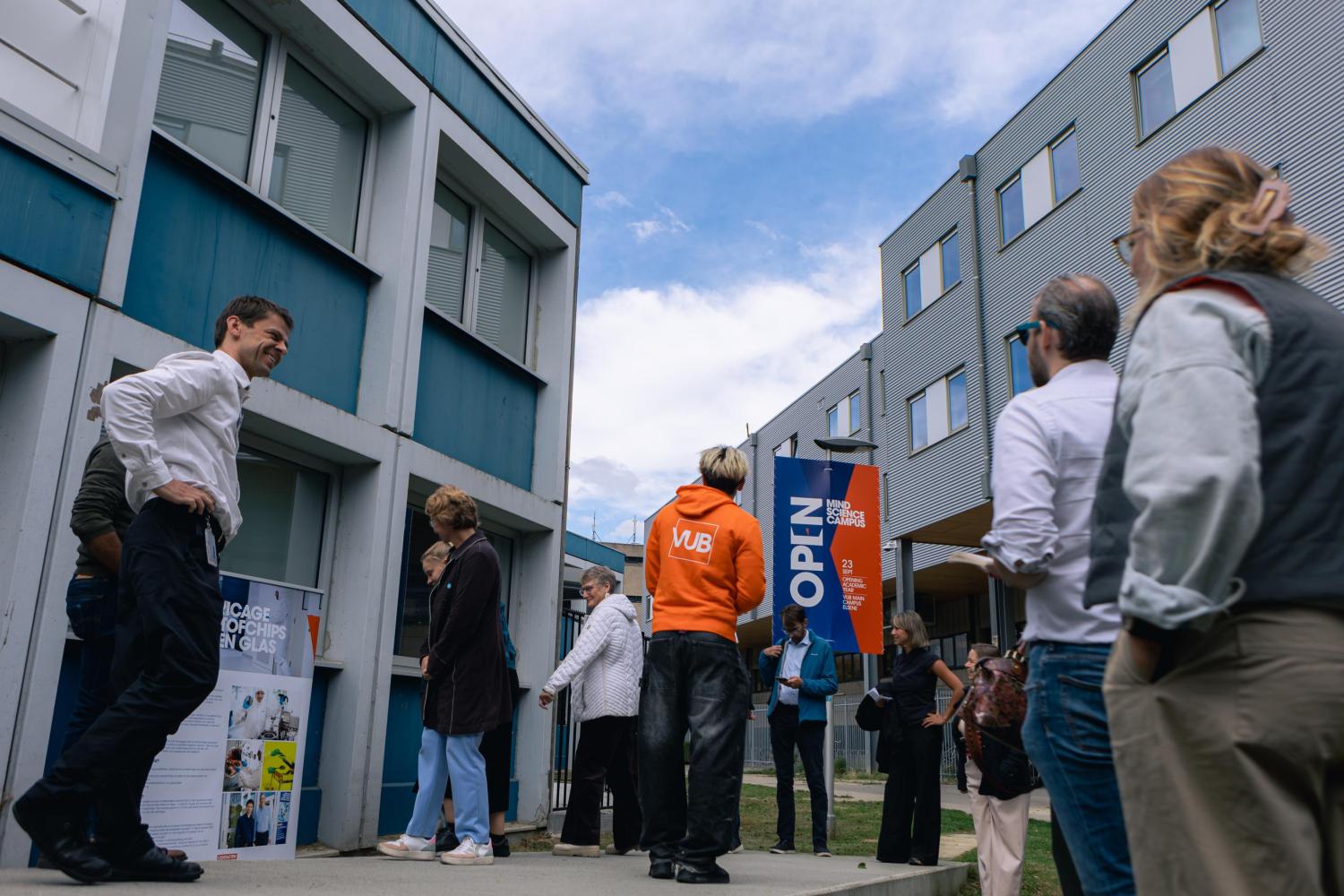
“Very educational walks,” we heard afterwards at the reception held at the microbrewery of the bioengineering department. We spent the afternoon differently. We chose the education walk in the LIC and the three STEM walks, inspired by rector Jan Danckaert. In his speech at the academic opening, he emphasised the importance of STEM education (Science, Technology, Engineering and Mathematics). According to him, it will have to provide the answers to the major challenges of our time, such as climate change, energy transition and artificial intelligence.
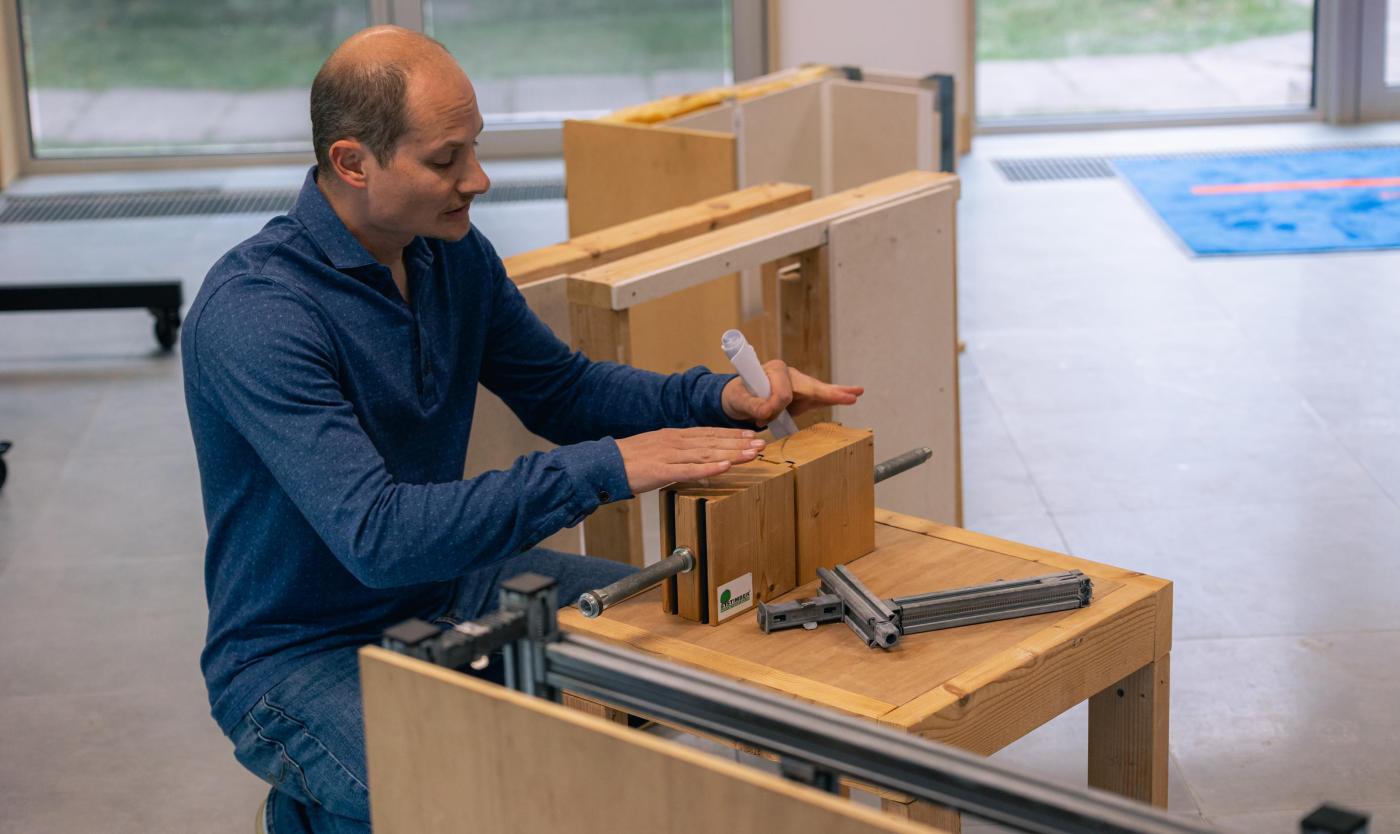
Sustainable Building for Tomorrow
These three themes came together beautifully in the walk Sustainable Building for Tomorrow. This tour started in the Circular Retrofit Lab, located in the yellow Willy Van der Meeren student units. “We were lucky to save them from demolition,” said Niels De Temmerman from the VUB Architectural Engineering research group. He explained how several units were converted into a demonstration space where the possibilities of circular and reversible construction are stretched and showcased as far as possible.
A notable guest in the Circular Retrofit Lab was Milan Amighi, a young scientist from the BruBotics lab. Milan had brought Eva, a robotic arm that, with the help of AI, could accurately pick up and hand over a sponge, a toothpaste box or a plastic cup upon simple request.
The highlight of this walk was the stop at MOBI, one of VUB’s flagship research groups. Here, 125 scientists help shape the future of electric cars, buses, trains and even ships. One participant had a curious question. After driving her electric car downhill from a mountain top, her battery indicator showed a higher level than at the top. Could it be that the car had recharged while braking? “Physically impossible,” replied MOBI researcher Joris De Hoog. Moral of the story: don’t blindly trust your battery management system.
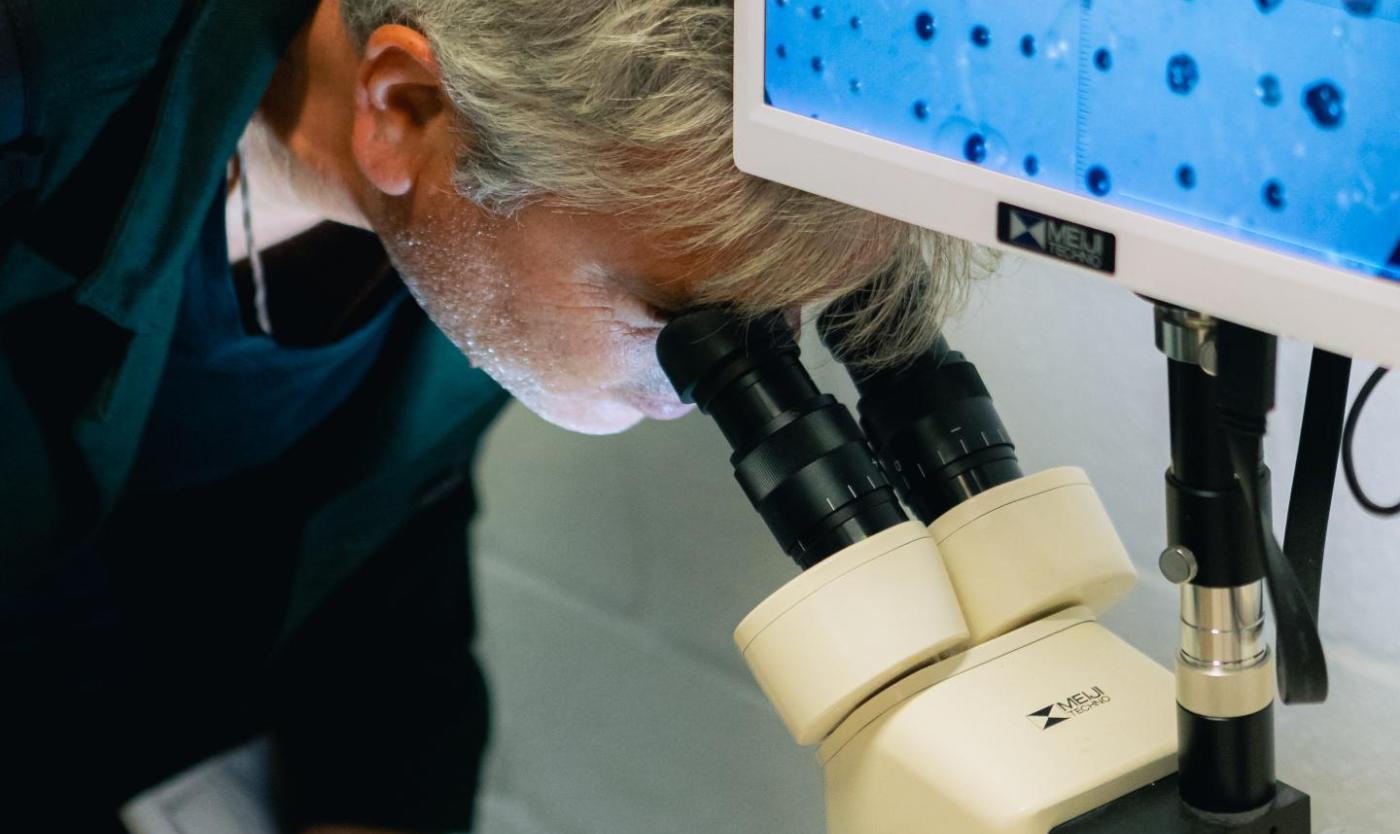
Building Blocks of Nature
On to the walk Building Blocks of Nature. On the tenth floor of building G, in the brand-new laboratories of the organic chemistry research group, everyone was impressed by the panoramic views of the Brussels skyline — and by the advanced safety measures for gas detection. “Green means safe,” explained lab manager Jolien De Neve. “But if the light turns orange, red, blue or white, you need to be alert.” Afterwards, we noticed some people glancing at the safety lights with half an eye.
One floor down, at the research group SUME (Sustainable Materials Engineering), Guy Van Assche stood ready with a sharp object… which he promptly stabbed into an otherwise innocent bicycle tyre. The result was no puncture, because the tyre was made of a self-healing polymer. Cool. Afterwards, postdoctoral researcher Brecklyn Groce guided us through a range of bio-based materials as alternatives to fossil fuels. Some examples: fibres made from wood waste, mushrooms or bacteria, and textiles with self-healing ink — just iron it briefly, and your T-shirt looks brand new.
On the eighth floor of building F, several dozen young researchers from the AMGC research group (Analytical, Environmental Changes & Geo-Chemistry) had been gathered to share their passion for science. We were flooded with fascinating facts about meteorites, fossils, cosmic dust, bones (cremated or not), archaeology, climate…
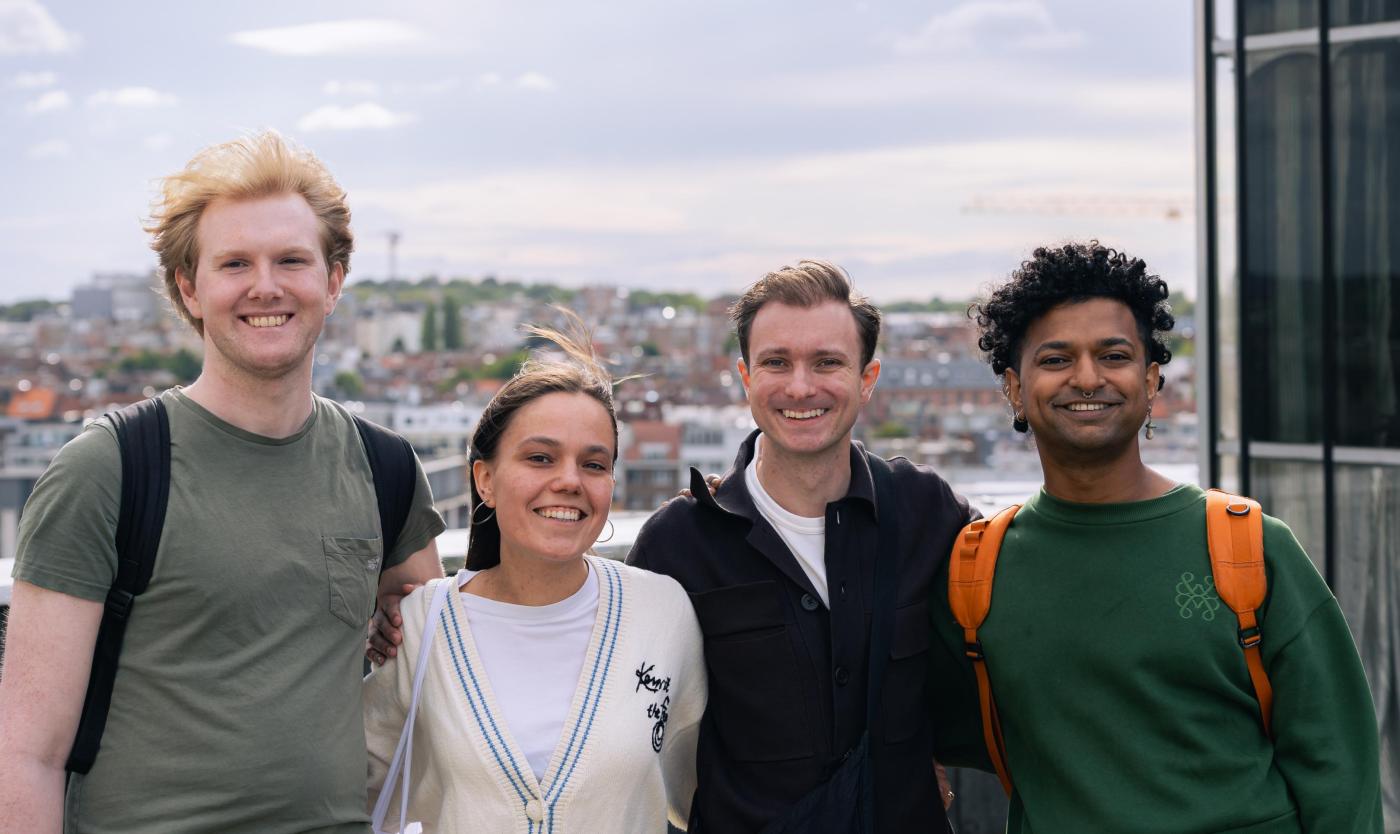
Bryce Olbert, Milda Blazyte, Craig McClure and Ashish Brhmajoshyula
A small international group of four students listened attentively at each stand and nodded enthusiastically. Surely they must be science students? Bryce Olbert, Milda Blazyte, Craig McClure and Ashish Brhmajoshyula burst out laughing. “Far from it,” said Bryce. “We all study linguistics. A few things we could still link to the science we learned in secondary school. This is our second year at the VUB, we met at the start of last academic year. We joined the walk because we really wanted to visit the greenhouses on the roof of building E. You can see them glistening from below. This is a unique opportunity.”
Learning and Innovation Center (LIC)
Time for a flying visit to the LIC. The Learning and Innovation Center, a collaboration between VUB and ULB, is a state-of-the-art education and research facility. The walkers were amazed by the flexible classrooms, co-creation spaces, digital labs and zones for blended learning. The cherry on top: the immersive room, where we were digitally surrounded in turn by magma flows, the ruins of Pompeii and an auditorium full of students.
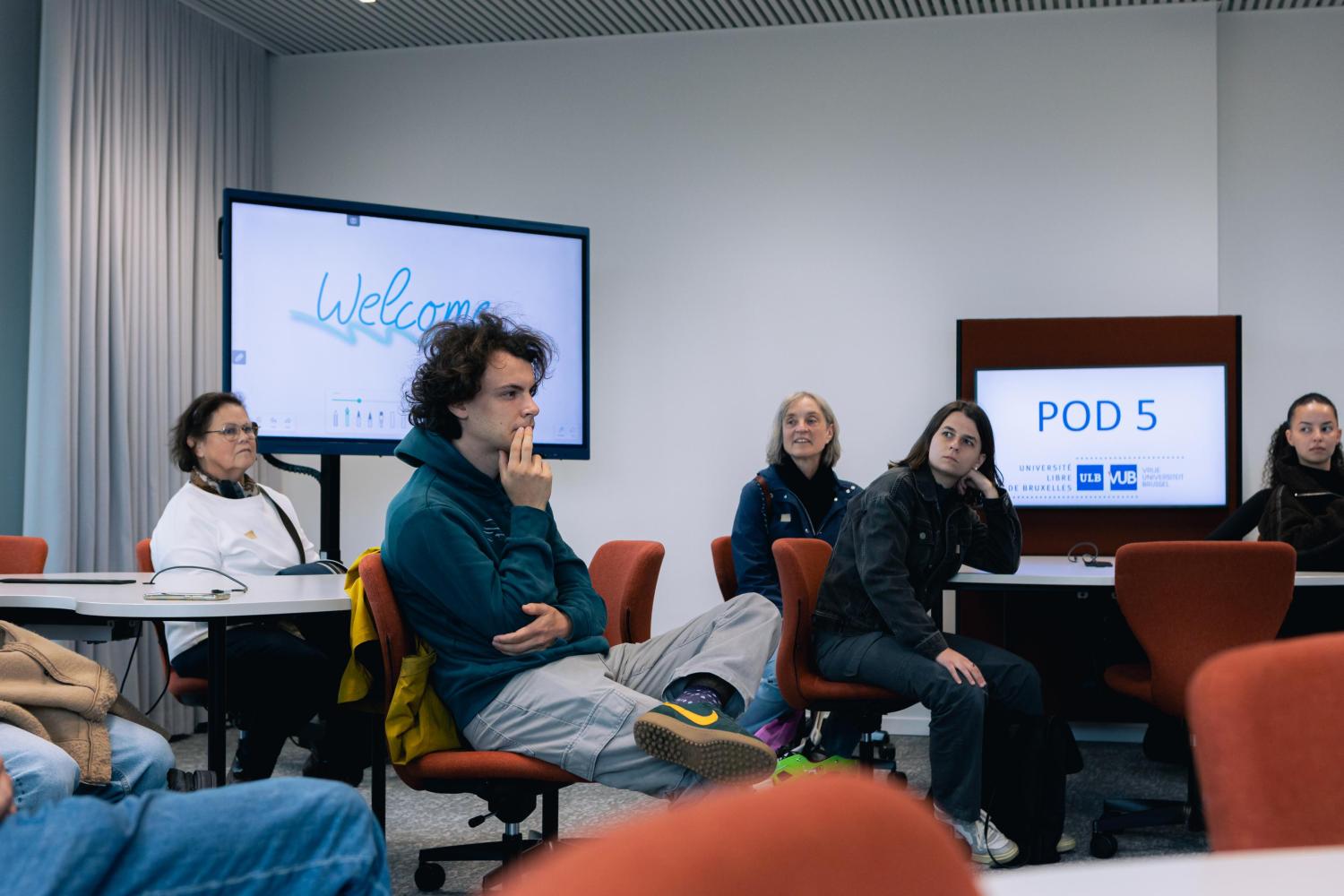
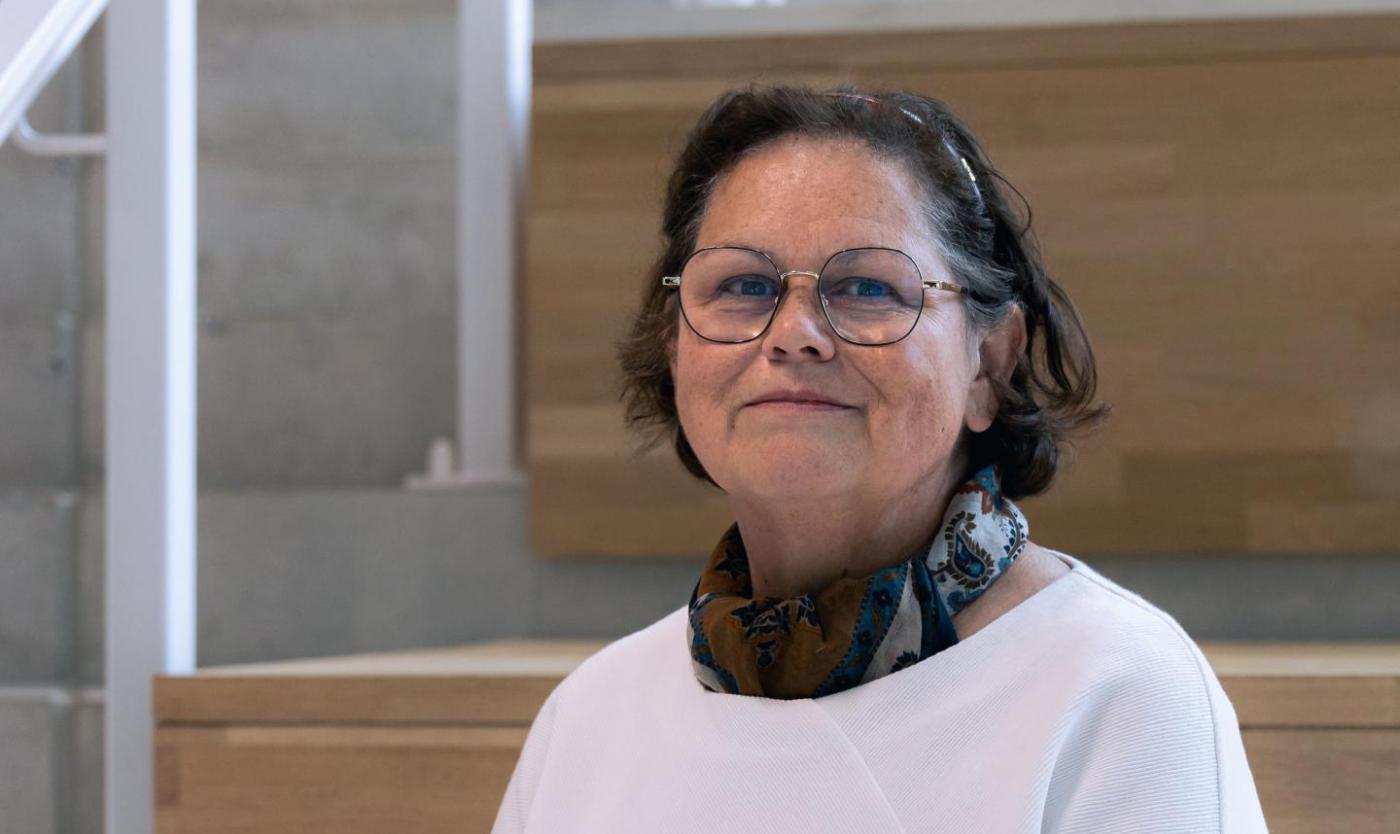
Carine Degreve
VUB alumna Carine Degreve was very enthusiastic. “I’m not surprised that the VUB is investing in this. I studied communication sciences and political sciences here from 1977 to 1981. We had fantastic professors, real heavyweights in their field, who were already working with progressive teaching methods like experiential learning and group work. Back then, we had to go to the cafeteria or a café for our group work. (laughs) Quite a difference from the LIC, which is entirely geared towards modern learning methods. For someone who came from a convent boarding school, the VUB was a revelation — in every way. Just the student life in the Willy Van der Meeren units alone. Those were fantastic times!”
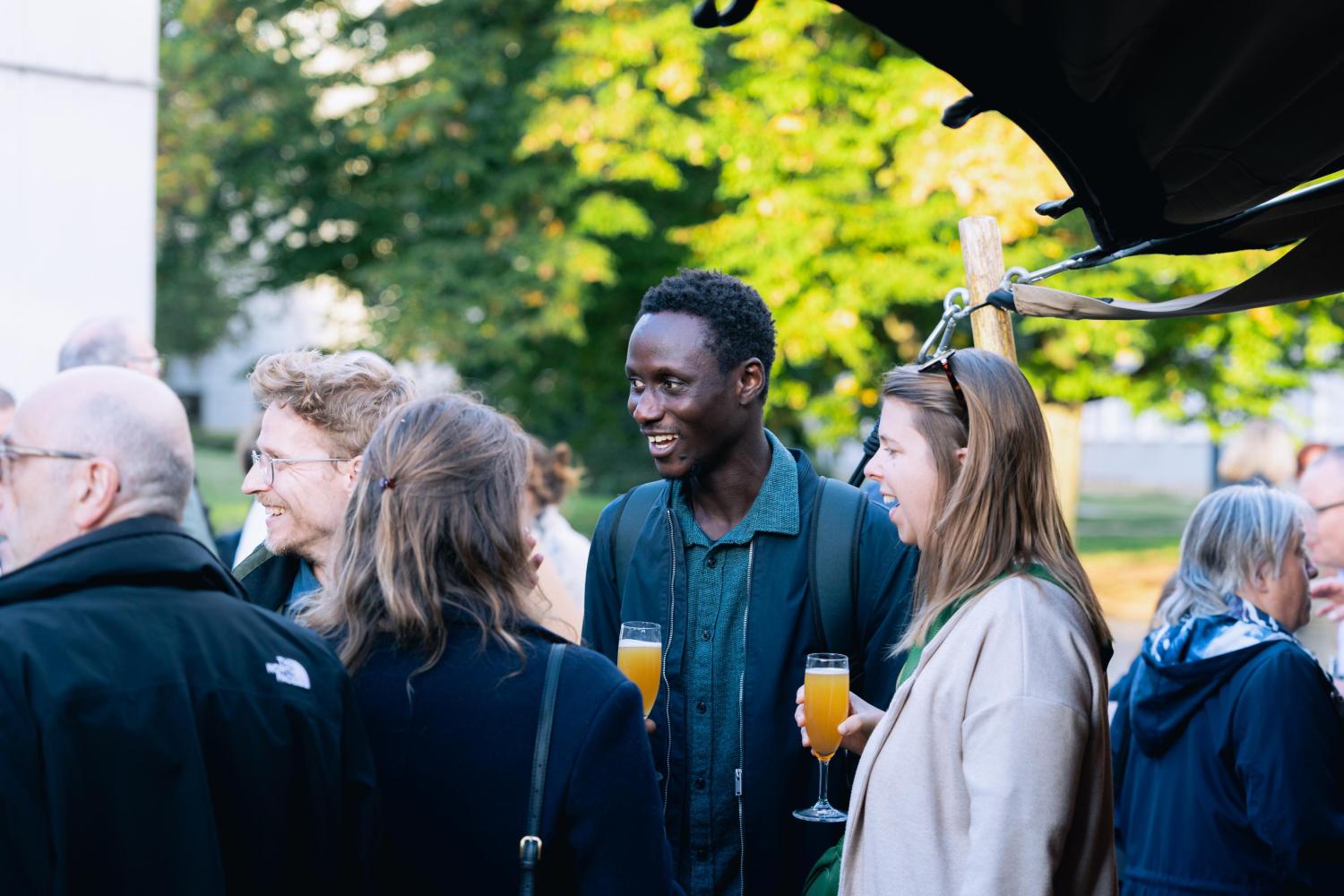
Reflections at the brewery
Biotech
And the Willy Van der Meeren units continue to enjoy fantastic times, even though no students live there anymore. The exterior has been insulated and refurbished with great respect for the heritage, and inside, new scientific history is being written at the VUB. In the former yellow units (now P4), the walkers were introduced to the MICROLAB, a cleanroom where liquid chips are etched into silicon and glass. The aim is to eventually integrate these chips into medical testing devices.
In the red buildings (now P1), participants were allowed a glimpse of the Bio Electron Cryogenic Microscopy — a giant microscope that visualises the structure of proteins in three dimensions — and to walk around the Bio Incubator Brussels. This bio-incubator consists of 2,000 square metres of laboratory and office space for startups in biotechnology, pharmaceuticals and health technology. Two of the six laboratories have already been taken, by the VIB Nanobody Core Facility. The lab technicians there develop nanobodies — the famous antibodies from the blood of llamas that have been immunised with specific substances. The animals themselves are kept elsewhere, the visitors were told. “A pity,” someone muttered.
VUB professor and biotech pioneer Jan Steyaert laughed: “Everyone always wants to see llamas. Maybe we should place a stuffed one here.”
The walk ended with food and drinks in the former blue units, which have recently become the base of the Fermented Food Pilot Plant. The scientists of the Industrial Microbiology and Food Biotechnology research group conduct research there into fermentation processes and their impact on the flavours and aromas in bread, beer and chocolate. The beer from the brewery and the bread from the bakery went down smoothly on 23 September. Those who wished could also take part in a ‘sensory chocolate analysis’ — a fancy term for a chocolate tasting.
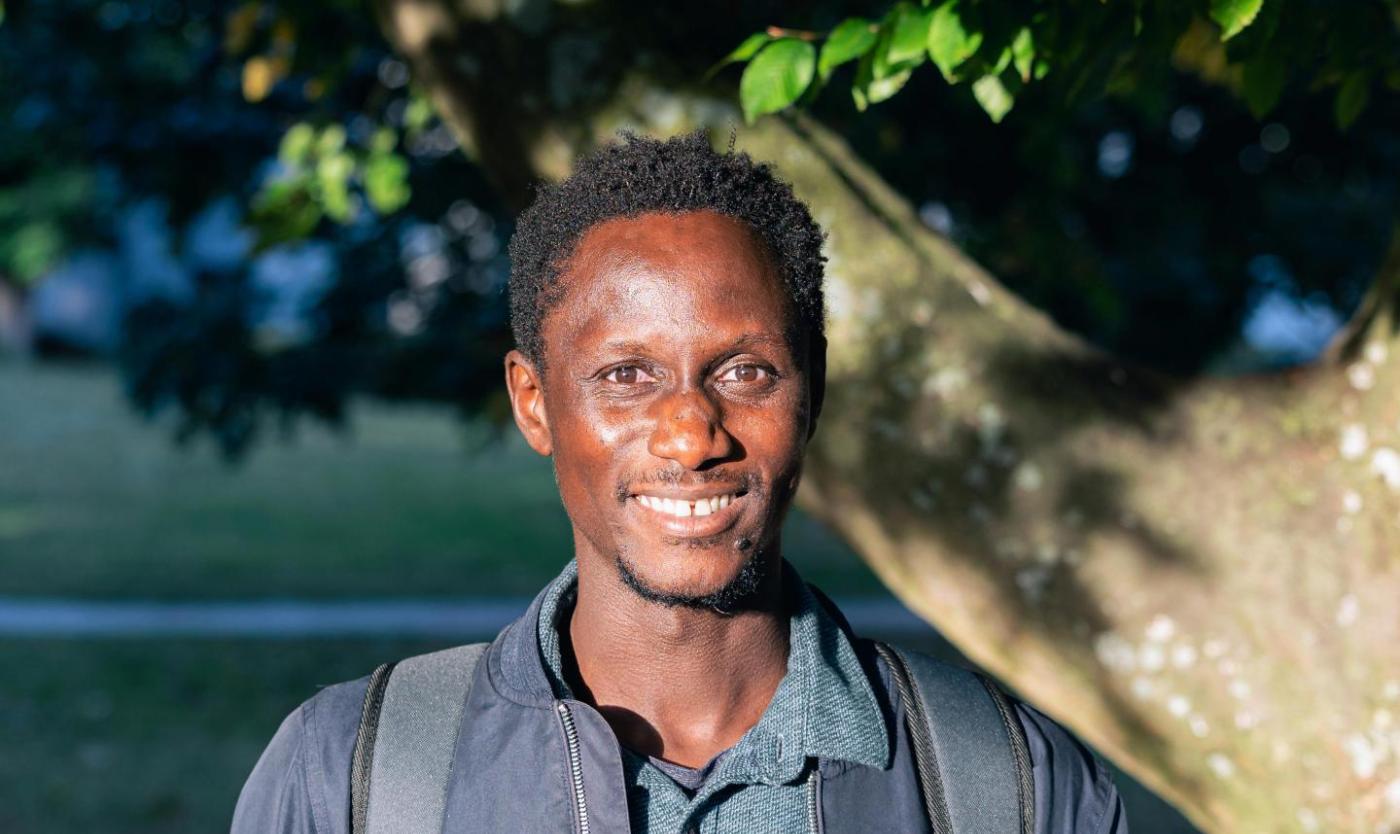
Jimmy Hendry Nzally
One visitor could hardly believe his eyes. The unit where postdoctoral researcher Jimmy Hendry Nzally spent a year of his student life in 2016 is now part of the bakery. “That’s where my bed was, and there my desk. Incredible! It was already an old building back then. But we had a blast. I had just arrived from Gambia and didn’t know anyone here. But within a year I had loads of Belgian and international friends and was president of the VUB’s international student platform. It was a transformation. I always sat there at the entrance, where I could see everything and everyone pass by. They called me ‘The king of the VUB’. (laughs heartily) Every time I come back here, I think of those beautiful days.”